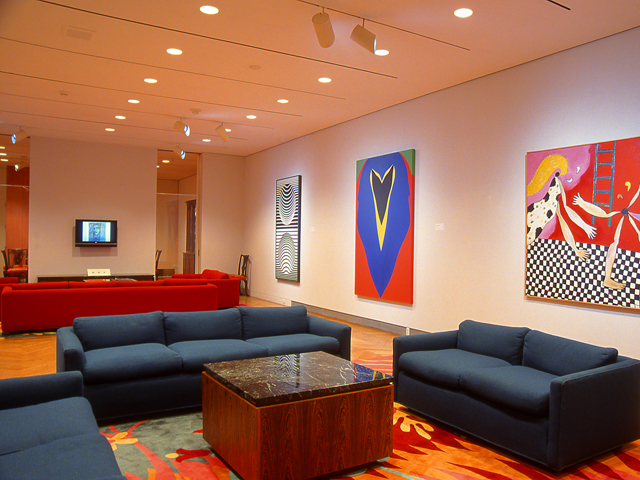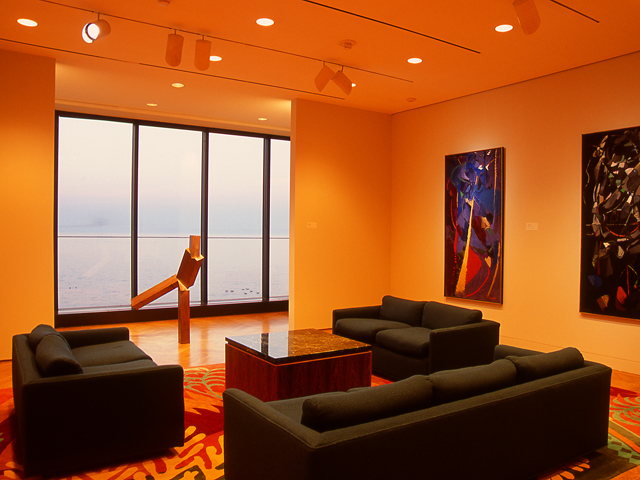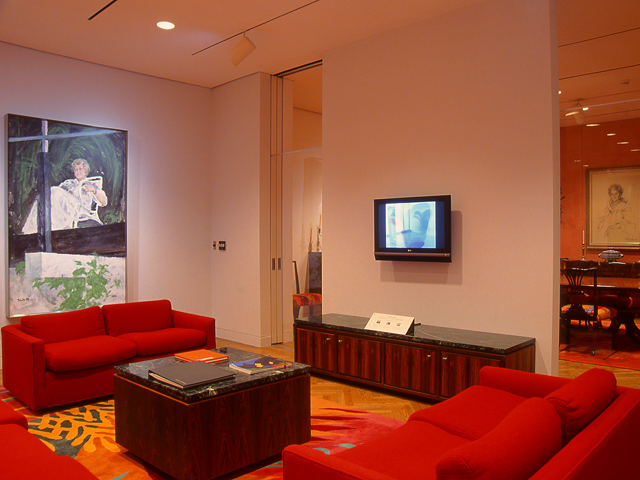When the Milwaukee Art Museum reopened its reinstalled collection in revamped galleries something was missing, but many didn't even notice. What had been called the "Bradley Rooms" or the "Bradley Apartment" had vanished.
The area was transformed into gallery space for part of the Bradley Collection.
 (PHOTO: John Glembin)
(PHOTO: John Glembin)
Peg Bradley’s mark on the museum, of course, did not go away. The incredible collection she donated (along with seed money to construct the Kahler building to house them) remains a major Milwaukee arts patrimony.
The collection contains more than 600 works, including examples by Milton Avery, Georges Braque, Marc Chagall, Edgar Degas, Raoul Dufy, Alberto Giacometti, Jasper Johns, Wassily Kandinsky, Paul Klee, Fernand Léger, Joan Miro, Edvard Munch, Gabriele Munter, Georgia O'Keeffe, Pablo Picasso, Pierre-Auguste Renoir, Mark Rothko, Alfred Stieglitz, Henri de Toulouse-Lautrec, Andy Warhol and many others.
 (PHOTO: John Glembin)
(PHOTO: John Glembin)
Bradley, of course, left her imprint all over the arts in this town. As one newspaper article noted in 1985, "Bradley was such a leading supporter of the arts in Milwaukee that when she died in 1978, arts organization administrators expressed worry about the future of their organizations."
Part of the construction of that east wing in the mid-’70s included an apartment with a stellar view of the lake, a kitchen, dining room and other spaces, where Bradley could entertain guests, host parties and, presumably, get away from it all, too.
There was also a Bradley apartment in the Allen-Bradley clocktower. That one – complete with all-pink ladies room with gold accents – survives.
 (PHOTO: John Glembin)
(PHOTO: John Glembin)
The concept is not unprecedented here and beyond. Benefactor and art collector Eckhardt Grohmann has his own private office nestled within the eponymous museum he gifted to MSOE a number of years back, too.
 (PHOTO: John Glembin)
(PHOTO: John Glembin)
Early on, the rooms were solely for Bradley’s private use and after her death they were rarely opened. It is here, I still recall, that I first saw the working model for the Calatrava addition in the 1990s.
In 2006, on the occasion of then-curator Joe Ketner’s reinstallation of the Bradley Collection, the rooms were opened to the public, but it seems likely most visitors didn’t realize that the spaces – now more integrated into the galleries – were once behind closed doors.
Born in Brooklyn, N.Y., where he lived until he was 17, Bobby received his BA-Mass Communications from UWM in 1989 and has lived in Walker's Point, Bay View, Enderis Park, South Milwaukee and on the East Side.
He has published three non-fiction books in Italy – including one about an event in Milwaukee history, which was published in the U.S. in autumn 2010. Four more books, all about Milwaukee, have been published by The History Press.
With his most recent band, The Yell Leaders, Bobby released four LPs and had a songs featured in episodes of TV's "Party of Five" and "Dawson's Creek," and films in Japan, South America and the U.S. The Yell Leaders were named the best unsigned band in their region by VH-1 as part of its Rock Across America 1998 Tour. Most recently, the band contributed tracks to a UK vinyl/CD tribute to the Redskins and collaborated on a track with Italian novelist Enrico Remmert.
He's produced three installments of the "OMCD" series of local music compilations for OnMilwaukee.com and in 2007 produced a CD of Italian music and poetry.
In 2005, he was awarded the City of Asti's (Italy) Journalism Prize for his work focusing on that area. He has also won awards from the Milwaukee Press Club.
He has be heard on 88Nine Radio Milwaukee talking about his "Urban Spelunking" series of stories, in that station's most popular podcast.







